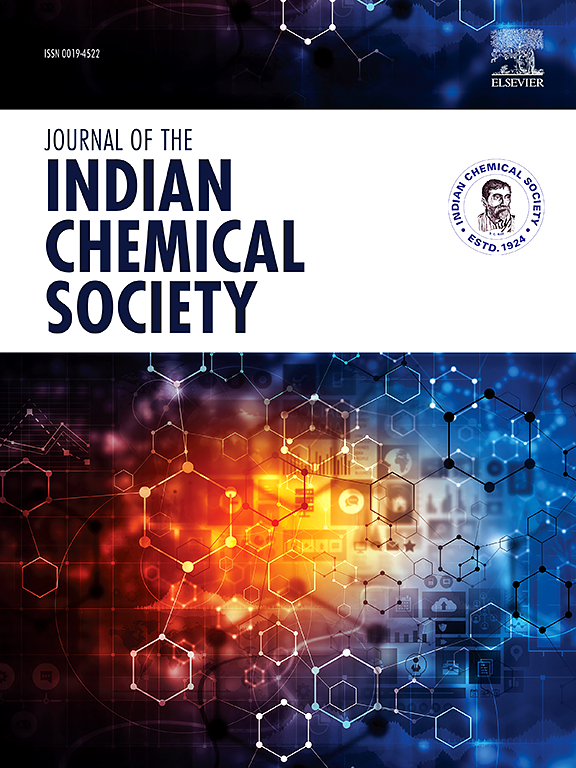Microwave-assisted N-formylation of active pharmaceutical ingredients (APIs) and intermediates, and screening of their N-formylated derivatives towards anti-bacterial potential
IF 3.2
4区 化学
Q2 CHEMISTRY, MULTIDISCIPLINARY
引用次数: 0
Abstract
We report a robust and sustainable approach for the selective N-formylation of API and their intermediates containing primary or secondary amine (both aliphatic and aromatic) in the presence of DMF and catalytic AcOH under microwave irradiation. The optimized conditions were established via N-formylation of Lopinavir intermediate-I and various marketed drugs (e.g. Duloxetine, Atomoxetine, Nebivolol, Desloratadine, Valaciclovir, Phenylephrine, Memantine, Vortioxetine, Tamsulosin, Palbociclib and Crizotinib) were employed subsequently. The other substrates include multi-functionalized API intermediates possessing various substituents or groups in addition to chiral centers in some cases. Generally, the N-formylation proceeded smoothly affording the corresponding product in good to acceptable yield. All the reactions were performed in gram scale and the methodology does not require the use of expensive and cumbersome column chromatographic purification of products. The selectivity, eco-friendly nature, low cost, operational and isolation/purification simplicity along with the access to several valuable drug impurities are the key features of the current protocol. When tested for anti-bacterial activities in vitro against several S. aureus strains along with E. coli, the low to good inhibition was noted for compound 2d and 2e against S. aureus.

微波辅助n -甲酰化活性药物成分和中间体及其n -甲酰化衍生物的抗菌潜力筛选
我们报道了一种在DMF和催化AcOH存在的微波照射下,API及其含有伯胺或仲胺(包括脂肪和芳香)的中间体的选择性n -甲酰化的稳健和可持续的方法。通过洛匹那韦中间体- i的n -甲酰化建立了优化条件,随后采用了多种市售药物(如度洛西汀、托莫西汀、奈比洛尔、地氯雷他定、伐昔洛韦、苯肾上腺素、刚胺、沃替西汀、坦索罗新、帕博西尼和克唑替尼)。其他底物包括在某些情况下除手性中心外具有各种取代基或基团的多功能化API中间体。总的来说,n -甲酰化过程顺利进行,相应的产物收率良好。所有的反应都以克为单位进行,该方法不需要使用昂贵和繁琐的柱层析纯化产品。选择性、环保性、低成本、操作和分离/纯化简单以及可获得几种有价值的药物杂质是当前方案的主要特点。当对几种金黄色葡萄球菌菌株和大肠杆菌进行体外抗菌活性测试时,化合物2d和2e对金黄色葡萄球菌的抑制作用从低到好。
本文章由计算机程序翻译,如有差异,请以英文原文为准。
求助全文
约1分钟内获得全文
求助全文
来源期刊
CiteScore
3.50
自引率
7.70%
发文量
492
审稿时长
3-8 weeks
期刊介绍:
The Journal of the Indian Chemical Society publishes original, fundamental, theorical, experimental research work of highest quality in all areas of chemistry, biochemistry, medicinal chemistry, electrochemistry, agrochemistry, chemical engineering and technology, food chemistry, environmental chemistry, etc.

 求助内容:
求助内容: 应助结果提醒方式:
应助结果提醒方式:


